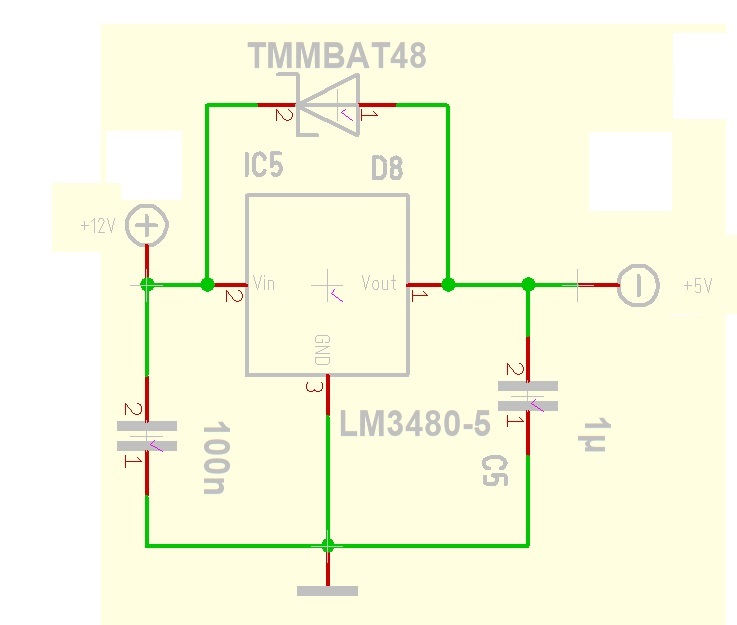Hi, I have a LM3480 for supplying an µC from 12V. Because I want to use the 5V supply from the progger without any 12V supply I have an inverse Schottky diode across the (between in- and output) of the LM3480.
Unfortunately the LM3480 latches if the progger switches the 5V on. If I supply the circuit from my laboratory power supply the regulator does not latch. It also does not latch if I short in- and output during the switch-on procedure of the progger. The input C at the 12V side is 100nF. Is there any solution to fix my problem (larger diode...) or to replace the regulator with an other with better reverse protection?


